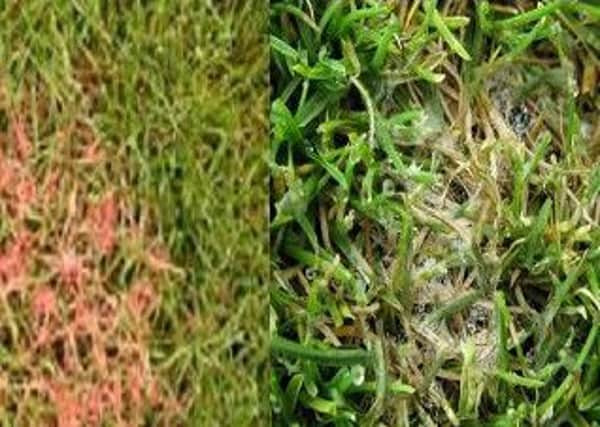Lawn care: What to do in February


As I am writing this it is a lovely day outside with the sun shining and a whopping 11C outside.
This is one of those winter days the grass really enjoys.
However, looking at the forecast for the next few weeks it is short-lived and the cold snap will return.
Advertisement
Hide AdAdvertisement
Hide AdWe have had a reasonably busy month looking after cricket squares and bowls greens, this can certainly be challenging this time of year.
Disease outbreaks, pest problems and weather are constant battles we face this time of year but that why we love what we do!
February
Some of you may have noticed on your lawn that there is some unsightly patches appearing which during damp and moderately warm nights can appear, examples such as these:
This particular disease is called fusarium patch, it is also known as fuzz, snow mould or microdochium patch.
Advertisement
Hide AdAdvertisement
Hide AdFusarium patch can kill off large patches or lawn if left untreated, most active patches will have a cotton wool appearance or pink fungal growths.
This is when the disease is most active, this can be transferred across the lawn by foot or mower which will cause further outbreaks on the lawn.
The best way to treat any outbreaks of disease is to apply a fungicide to the lawn which on average will provide at least 6 weeks protection from further outbreaks.
This is something to certainly look out for on your lawn, the earlier its caught the better.
Tips for this month
Advertisement
Hide AdAdvertisement
Hide AdStay off the lawn during frosty periods, if the leaf is frozen and is walked on this can damage/bruise the grass leaving unsightly black foot prints everywhere
Continue to tackle any moss problems, this can be achieved by applying high in iron fertilisers liquid irons, the iron will scorch the moss leaving it to blacken.
This can then be raked out by hand or left another month and scarified.
Aeration the secret to a great lawn, regular aeration will ensure air, water and nutrients can penetrate through to the roots of the plant.
Advertisement
Hide AdAdvertisement
Hide AdThis helps the roots grow deeper which produces a stronger, more vigorous lawn. This will also mean the deeper the roots the less chance you have of drying out during the summer months
If you haven’t fed the lawn this year then a small dose of nitrogen with some potassium in will do the trick, the potassium will harden the plant which will help protect it from disease outbreaks and will give the plant a much needed boost
As I suggested last month if conditions allow then why not cut the lawn, just cut a small amount off if it is long and gradually bring the height down over a few weeks.
This will keep the grass ticking over and will smarten up the lawn.
Advertisement
Hide AdAdvertisement
Hide AdKeep an eye out for worm casts, these will start creeping into the lawn within the next few weeks or so, the best thing to do is allow them to dry and when there is a nice drying day get a stiff brush and brush them off the affected areas.
If you mow over them whilst damp they will smear all over the lawn and will cause small patches over the lawn.
We hope you find these tips useful, if we can help you in any way then please let us know.
Email [email protected] or follow us on social media @premlawn.
Take a look at some services we offer at www.premiershiplawncare.co.uk.